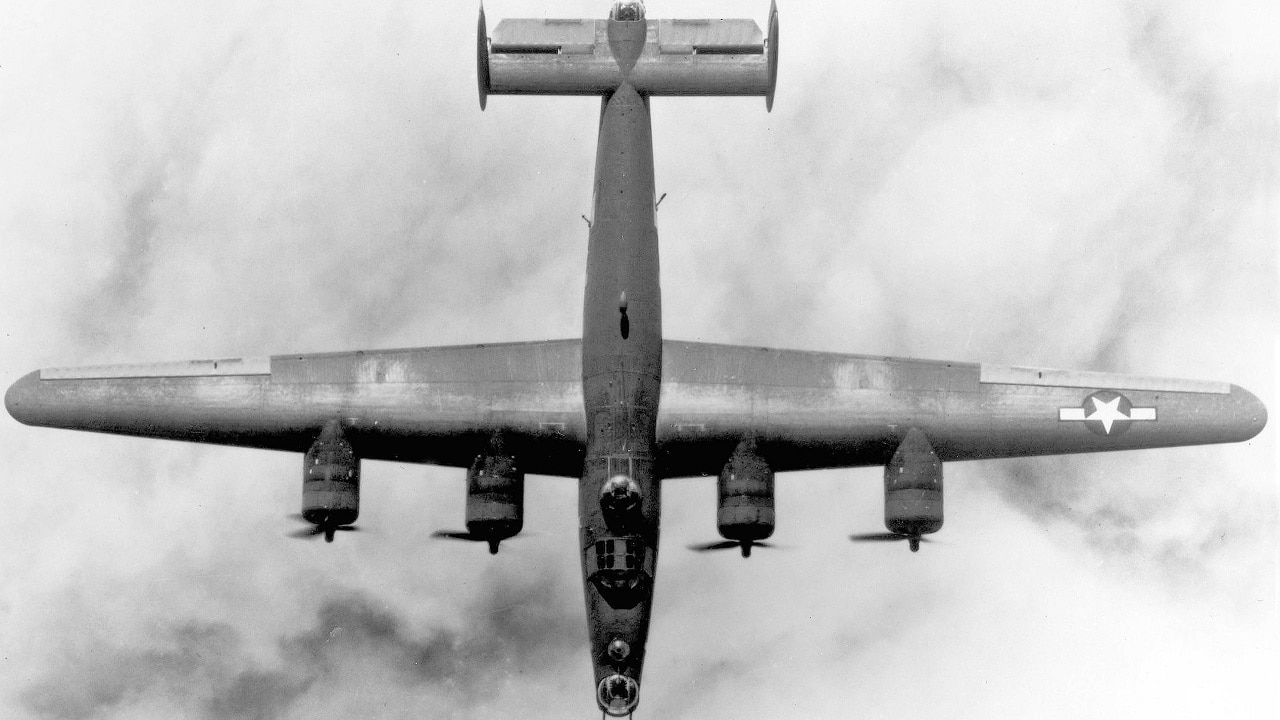The Consolidated B-24 Liberator was a bomber that truly lived up to its name as it helped “liberate” Europe from the Nazis but also went on to play a prominent role in the Pacific and Far East theaters of World War II. The heavy bomber has long been overshadowed by the Boeing B-17 – and even compared unfavorably – and yet, the B-24 was newer, more efficient, and more versatile than the Boeing design. It could fly faster, higher, and further than the B-17.
With more than 18,000 produced, the bomber became one of the true workhorses of the United States Army Air Forces. However, the Liberator was not fully developed when the war broke out, and yet was essentially obsolete by the time it ended. The bomber wasn’t without issues – it was hard to fly, and required the best of a skilled pilot.
In addition, despite being a large aircraft, it was cramped for the crew and at altitude, it was always cold inside the aircraft, which is why the airmen had to don heavy leather jackets and even trousers when taking off from South Pacific islands.
On the other hand, the “Lib” was able to take more than its fair share of damage and get the crew home.
Notable Facts about the B-24 Liberator:
Built in Huge Numbers
In 1944, the United States produced almost 100,000 aircraft and at one point a new B-24 Liberator was constructed every 51 minutes. The aircraft was manufactured not only by Consolidated – which had designed the heavy four-engine bomber – but also by Douglas, Ford and North American.
The aircraft, which was used in every theater of operations, featured a modern design that included a shoulder-mounted “Davis Wing.” That provided the Liberator with long-range, high cruise speed, and the ability to carry a heavy bomb load.
Big Crew
It is easy see why the B-24 is often described as being cramped despite having a length of sixty-six feet and a wingspan of 110 feet. It typically carried a crew of ten that included the pilot, co-pilot, bombardier, navigator, radio operator, flight engineer, ball turret gunner, tail gunner and two waist gunners.
Powered by four Pratt & Whitney R-1830-34S engines, which provided 1,200 hp each, the aircraft would have been loud inside.
Unique Design
The B-24 was a notable departure from other heavy bombers of the era. It featured a modern tricycle undercarriage, while the deep fuselage was designed to allow the 3,600 kg (four-ton) bomb load to be stored vertically. A catwalk provided the crew access to the rear fuselage.
One Carried Churchill
The aircraft was well respected by the United States General Staff who praised its capabilities. In addition, the aircraft was well-liked by British Prime Minister Winston Churchill. “Commando,” (Air Ministry serial number AL504) was the very long-range Liberator II that was modified to serve as the personal aircraft for Prime Minister Winston Churchill.
The bomb racks had been removed and passenger accommodation installed. The aircraft was used by Churchill during a critical point in the war when he or other VIPs had to make sensitive diplomatic trips. However, after taking part in an extended trip, the prime minister switched to “Ascalon,” an Avro York – a transport based on the Lancaster bomber. That was likely for the best, as “Commando” was lost while on a flight over the Atlantic in March 1945.
The B-24 Closed the Atlantic Gap
During the Second World War, Great Britain’s survival depended on America for war material and food, and while most convoys were escorted by a warship, aircraft proved to be the most effective weapon against the German U-Boat threat.
The issue was that B-17s operating from Canada and the UK left a gap in the Mid-Atlantic Ocean, where the convoys were vulnerable. British flying boats were able to intercept the U-Boat “Wolf Packs” that operated from France, but once clear of the range of the RAF aircraft, the U-Boats could hunt at will.
The very-long variants of the B-24 were able to “close the gap” and the U-boat menace was considerably reduced.
The U.S. Navy even went on to use a specially modified variant of the Liberator, the Consolidated PB4&-2 Privateer as a late war patrol bomber.
Few Survive
Despite the massive number of B-24 Liberators that were constructed, today a total of thirteen are still in existence and nine of those were made by Consolidated.
Only two are still airworthy, including one in the collection of the Commemorative Air Force that had been used as a transport aircraft, and one owned by the Collings Foundation. It had been assigned to the Royal Air Force in India and was abandoned after the war. After being restored, it was purchased by the foundation in 1989.
Now a Senior Editor for 1945, Peter Suciu is a Michigan-based writer who has contributed to more than four dozen magazines, newspapers and websites. He regularly writes about military hardware, and is the author of several books on military headgear including A Gallery of Military Headdress, which is available on Amazon.com. Peter is also a Contributing Writer for Forbes.

